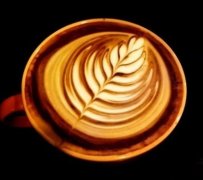Coffee common sense several points that should be paid attention to in making espresso Espresso
Making a good espresso can be a challenge for both coffee lovers at home and experienced baristas in the cafe. So to make a perfect espresso, we should consider the following factors!

[1] bean
Requirement: there is no good espresso without good coffee beans. Coffee beans must be fresh. Take espresso, for example, the consistency, thickness and color of Crema extracted from stale coffee beans will be seriously affected, and the taste will be greatly reduced.
[2] Baking technology
Requirements: roast raw coffee beans, so that coffee beans show a unique color, aroma and taste. The taste of coffee depends 80% on roasting.
Coffee grinding
Requirements: the thickness of coffee powder must be able to maintain the extraction process between 25-30 seconds. Once the coffee beans are ground, the flavor begins to decline after 2 minutes. In order to keep them fresh, the coffee powder should be ground fresh.
[4] bean grinder
Requirements: the cone type grinding plate is more average and has a longer life than the flat one, and the coffee beans will not be heated during grinding. If the temperature is too high during grinding, the coffee will lose its flavor. At present, the cone type and peace type combined grinding plate is the best design. The bean grinder should be often cleaned and kept clean, and the grinding plate should be updated in time, so that the bean can be in full contact with the surface of the grinding plate.
[5] amount of coffee
Requirements: it usually takes 7 grams of coffee powder and 40 ~ 65 milliliters of water to make a cup of espresso (refers to the amount of water used, not the amount of extraction, here we consider the amount of water absorbed by coffee powder). If you want stronger coffee, you can reduce the amount of water. The correct amount of extraction should be between 1 and 1.25 ounces (flushing out 1 ounce in 25 seconds is the best performance).
[6] packing and powder loading
Requirements: coffee powder needs to be flat and smooth, and coffee powder must be evenly distributed in the filter. Usually, you can first use 3 kg pressure powder, then use 5 kg pressure once, and then use 10 kg pressure to rotate 720 °to make the powder surface smooth and smooth.
[7] water
Requirement: the water used to make espresso must be purified. Some cities need to use trace elements to balance water quality. The water will go bad if it is in the coffee machine for too long. Use a small glass to connect a cup of water in the coffee machine, cool and try, such as the water has gone sour, replace the water in the machine with fresh water.
[8] Water temperature
Requirements: the water temperature must be stable at 88-92 degrees, and the Italian espresso machine must pay attention to the stability of the water temperature. If the water temperature is too low, it will cause insufficient extraction, and the substances inside the coffee can not be fully released, which can only make a cup of espresso with insufficient flavor and sour taste; once the water temperature is too high, excessive extraction will make the coffee bitter and astringent.
[9] pressure
Requirements: water pressure 9-11bar. The general hot water brewing method can only extract water-soluble substances in coffee, while espresso can further extract water-insoluble substances under high pressure. These high pressures will completely emulsify the lipids inside the coffee and dissolve into the water, which is the main source of body. Crema will make espresso taste thicker, making people drink with a "velvety" feeling; and stickiness will form a lower surface tension, more able to invade the taste buds, so that mellow reverberate in the mouth for a long time. The most important sign of a good espresso is that it has a layer of Crema, which is a mixture of fat, water and air in the coffee during the extraction process. Crema should be uniform in color, about 3-5 cm thick, gently shake the coffee cup, this layer of Crema will stick to the wall like thick syrup. If the Crema is dark brown or even black, the coffee is overextracted; if it is yellowish, the coffee is not fully extracted.
[10] Time
Requirement: extraction time 20-30 seconds. It is generally believed in the industry that when extracting espresso, the quality of two cups extracted at the same time is more perfect than that of one cup alone. The extraction time for two 1-ounce cup espresso should be between 25 and 30 seconds. In addition to time, the color of Ruyi espresso begins to fade and the production process should be completed. The goal should be to produce dark red espresso without changing color within 25-30 seconds.
[11] filter handle and filter
Requirements: the filter handle must be kept at the same temperature as the water temperature of espresso. Therefore, the handle should be preheated on the head of the machine.
[12] Machine cleaning
Requirements: if the machine, filter and filter handle are not cleaned, the espresso will smell of rotten oil.
[13] Environmental factors
Requirements: the humidity and temperature of the air will change during the day. Because coffee powder is easy to absorb moisture, the thickness of the bean grinder also needs to be adjusted so that the thickness of the powder can reach 25-30 seconds during extraction.
[14] Italian espresso cup
Requirements: in order to maintain the heat and aroma, the Italian espresso cup has a thick wall and narrow mouth. Espresso cups should be preheated.
Changes in any of these factors will increase or decrease the perfection of espresso. The production of espresso is an art, and the perfect espresso may be a concept rather than a reality. The beauty of espresso lies in its fickleness and difficulty. Because there are so many influencing factors, only the human brain and emotional heart can understand and control the complexity of espresso.
Important Notice :
前街咖啡 FrontStreet Coffee has moved to new addredd:
FrontStreet Coffee Address: 315,Donghua East Road,GuangZhou
Tel:020 38364473
- Prev

Analysis on the production of Italian espresso based on the basic knowledge of coffee
Espresso training is believed to be the first step for many beginners to learn how to make coffee. However, Espresso is also the key and foundation of learning.
- Next

Boutique coffee beans Yemeni Matari mocha coffee
Yemen is the first stop for the coffee variety Arabica to be transplanted from Ethiopia. Although the genetic polymorphism is impaired, it still retains a considerable number of multiple coffee genes, making it the second country in the world qualified to be crowned with ancient superior varieties. In addition, early Yemeni coffee was mainly exported from the port of Mocha, so the coffee that was later exported from here was named after Mocha. At the same time, Yemen is also a classic of early taste in the sun.
Related
- Beginners will see the "Coffee pull flower" guide!
- What is the difference between ice blog purified milk and ordinary milk coffee?
- Why is the Philippines the largest producer of crops in Liberia?
- For coffee extraction, should the fine powder be retained?
- How does extracted espresso fill pressed powder? How much strength does it take to press the powder?
- How to make jasmine cold extract coffee? Is the jasmine + latte good?
- Will this little toy really make the coffee taste better? How does Lily Drip affect coffee extraction?
- Will the action of slapping the filter cup also affect coffee extraction?
- What's the difference between powder-to-water ratio and powder-to-liquid ratio?
- What is the Ethiopian local species? What does it have to do with Heirloom native species?

